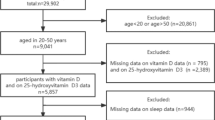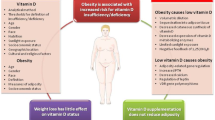Abstract
Background and aims: Serum dehydroepiandrosterone-sulfate (DHEAS), the most abundant adrenal steroid hormone, may predict aging status and longevity in humans. The aims of this study are to clarify the fundamental properties of serum DHEAS as a biomarker for health in middle-aged men. Methods: We investigated correlations of serum DHEAS with age or conventional health indices (body mass index, blood pressure, and 12 serum/blood tests) and associations of serum DHEAS with lifestyle factors (smoking, drinking, exercise, sleep) in 384 healthy men aged 30–49 years, randomly selected from voluntary attendees at a check-up. Results: Serum DHEAS had an inverse and stronger correlation with age (Spearman’s r=−0.320, p<0.001) than with any conventional health indices used here. Regardless of age and BMI adjustments, serum DHEAS had a weak correlation with serum uric acid (crude Spearman’s r=0.198, p<0.001), and its correlations with other conventional health indices were weaker or non-significant. Serum DHEAS rose in parallel with increased smoking and alcohol intake (p for trend <0.001 in both), but had no significant relationships with exercise or sleep. Conclusions: Serum DHEAS reflects age better than health status evaluated by conventional health indices, and may increase with cigarette smoking and alcohol drinking in middle-aged healthy men.
Similar content being viewed by others
References
Maninger N, Wolkowitz OM, Reus VI, Epel ES, Mellon SH. Neurobiological and neuropsychiatric effects of dehydroepiandrosterone (DHEA) and DHEA sulfate (DHEAS). Front Neuroendocrinol 2009; 30: 65–91.
Muller M, den Tonkelaar I, Thijssen JH, Grobbee DE, van der Schouw YT. Endogenous sex hormones in men aged 40–80 years. Eur J Endocrinol 2003; 149: 583–9.
Enomoto M, Adachi H, Fukami A et al. Serum dehydroepiandrosterone sulfate levels predict longevity in men: 27-year follow-up study in a community-based cohort (Tanushimaru Study). J Am Geriatr Soc 2008; 56: 994–8.
Ravaglia G, Forti P, Maioli F et al. Dehydroepiandrosterone-sulfate serum levels and common age-related diseases: results from a cross-sectional Italian study of a general elderly population. Exp Gerontol 2002; 37: 701–12.
Bjørnerem A, Straume B, Midtby M et al. Endogenous sex hormones in relation to age, sex, lifestyle factors, and chronic diseases in a general population: the Tromsø Study. J Clin Endocrinol Metab 2004; 89: 6039–47.
Tannenbaum C, Barrett-Connor E, Laughlin GA, Platt RW. A longitudinal study of dehydroepiandrosterone sulphate (DHEAS) change in older men and women: the Rancho Bernardo Study. Eur J Endocrinol 2004; 151: 717–25.
Cappola AR, O’Meara ES, Guo W, Bartz TM, Fried LP, Newman AB. Trajectories of dehydroepiandrosterone sulfate predict mortality in older adults: the Cardiovascular Health Study. J Gerontol A Biol Sci Med Sci 2009; 64: 1268–74.
Sanders JL, Boudreau RM, Cappola AR et al. Cardiovascular dis ease is associated with greater incident dehydroepiandrosterone sulfate decline in the oldest old: the Cardiovascular Health Study All Stars Study. J Am Geriatr Soc 2010; 58: 421–6.
Roth GS, Lane MA, Ingram DK et al. Biomarkers of caloric restriction may predict longevity in humans. Science 2002; 297: 811.
Mazat L, Lafont S, Berr C et al. Prospective measurements of dehydroepiandrosterone sulfate in a cohort of elderly subjects: relationship to gender, subjective health, smoking habits, and 10-year mortality. Proc Natl Acad Sci USA 2001; 98: 8145–50.
OECD. Health at a Glance 2009: OECD Indicators, OECD Publishing, 2009. doi: 10.1787/health_glance-2009-en
Schunkert H, Hense HW, Andus T, Riegger GA, Straub RH. Relation between dehydroepiandrosterone sulfate and blood pressure levels in a population-based sample. Am J Hypertens 1999; 12: 1140–3.
Hautanen A, Mänttäri M, Manninen V et al. Adrenal androgens and testosterone as coronary risk factors in the Helsinki Heart Study. Atherosclerosis 1994; 105: 191–200.
Field AE, Colditz GA, Willett WC, Longcope C, McKinlay JB. The relation of smoking, age, relative weight, and dietary intake to serum adrenal steroids, sex hormones, and sex hormone-binding globulin in middle-aged men. J Clin Endocrinol Metab 1994; 79: 1310–6.
Haren MT, Banks WA, Perry III HM et al. Predictors of serum testosterone and DHEAS in African-American men. Int J Androl 2008; 31: 50–9.
Trichopoulou A, Bamia C, Kalapothaki V, Spanos E, Naska A, Trichopoulos D. Dehydroepiandrosterone relations to dietary and lifestyle variables in a general population sample. Ann Nutr Metab 2003; 47: 158–64.
Ukkola O, Gagnon J, Rankinen T et al. Age, body mass index, race and other determinants of steroid hormone variability: the HERITAGE Family Study. Eur J Endocrinol 2001; 145: 1–9.
Mendelson JH, Sholar MB, Goletiani N, Siegel AJ, Mello NK. Effects of low- and high-nicotine cigarette smoking on mood states and the HPA axis in men. Neuropsychopharmacol 2005; 30: 1751–63.
Baron JA, Comi RJ, Cryns V, Brinck-Johnsen T, Mercer NG. The effect of cigarette smoking on adrenal cortical hormones. J Pharmacol Exp Ther 1995; 272: 151–5.
Sierksma A, Sarkola T, Eriksson CJ, van der Gaag MS, Grobbee DE, Hendriks HF. Effect of moderate alcohol consumption on plasma dehydroepiandrosterone sulfate, testosterone, and estradiol levels in middle-aged men and postmenopausal women: a diet-controlled intervention study. Alcohol Clin Exp Res 2004; 28: 780–5.
Mantzoros CS, Georgiadis EI. Body mass and physical activity are important predictors of serum androgen concentrations in young healthy men. Epidemiology 1995; 6: 432–5.
Goh VHH, Tong TYY, Mok HP, Said B. Interactions among age, adiposity, bodyweight, lifestyle factors and sex steroid hormones in healthy Singaporean Chinese men. Asian J Androl 2007; 9: 611–21.
Fischli S, Jenni S, Allemann S et al. Dehydroepiandrosterone sulfate in the assessment of the hypothalamic-pituitary-adrenal axis. J Clin Endocrinol Metab 2008; 93: 539–42.
Nasrallah MP, Arafah BM. The value of dehydroepiandrosterone sulfate measurements in the assessment of adrenal function. J Clin Endocrinol Metab 2003; 88: 5293–8.
Kudielka BM, Wust S. Human models in acute and chronic stress: assessing determinants of individual hypothalamus-pituitaryadrenal axis activity and reactivity. Stress 2010; 13: 1–14.
Goh VHH, Tong TYY. Sleep, sex steroid hormones, sexual activities, and aging in Asian men. J Androl 2010; 31: 131–7.
Author information
Authors and Affiliations
Corresponding author
Additional information
Deceased
Rights and permissions
About this article
Cite this article
Nagaya, T., Kondo, Y. & Okinaka, T. Serum dehydroepiandrosterone-sulfate reflects age better than health status, and may increase with cigarette smoking and alcohol drinking in middle-aged men. Aging Clin Exp Res 24, 134–138 (2012). https://doi.org/10.1007/BF03325159
Received:
Accepted:
Published:
Issue Date:
DOI: https://doi.org/10.1007/BF03325159




